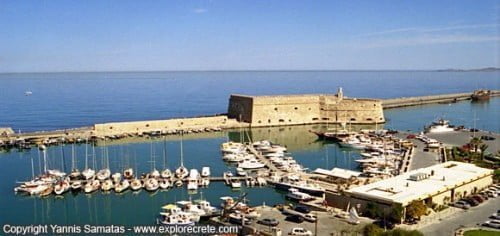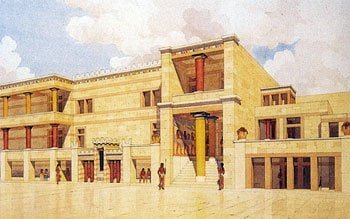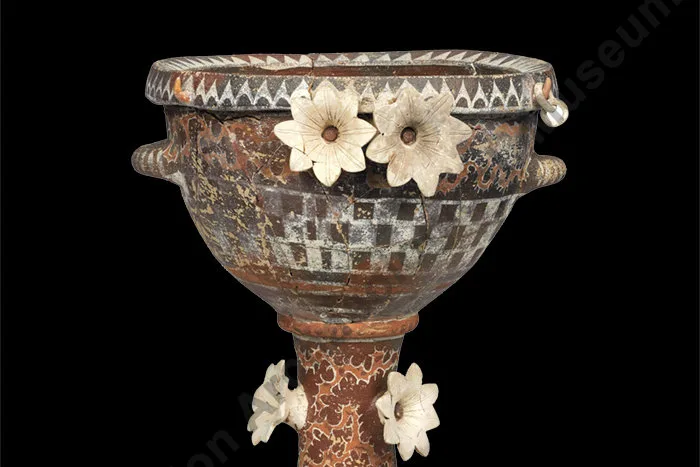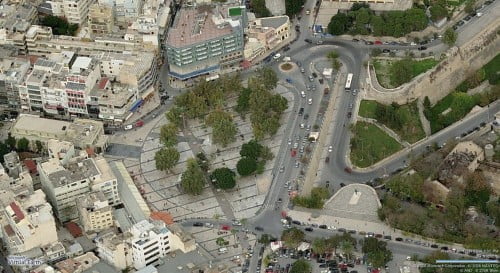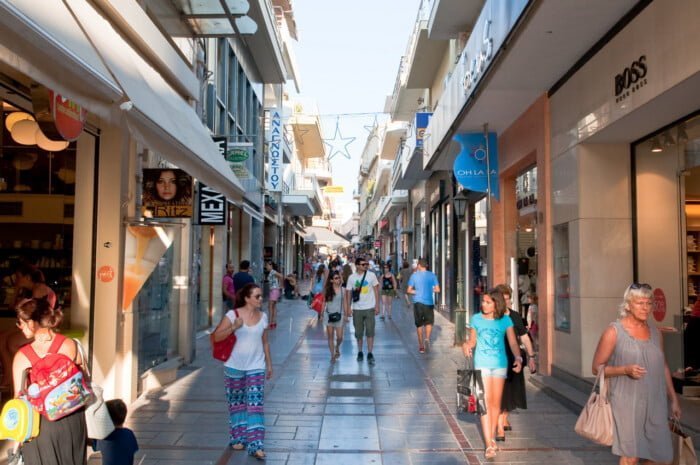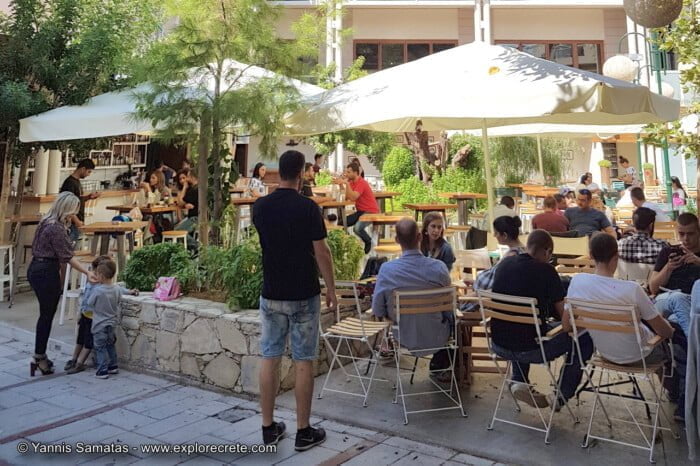Saint George Gate in Heraklion
The Saint George Gate
The Saint George Gate lay buried under Eleftherias Square for many decades. It was recently rediscovered and restored, bringing to light an unknown picture of Heraklion’s history.
The Saint George Gate is called “Pili Agiou Georgiou” in Greek and it is used for art exhibitions in Heraklion.
The St George Gate was built in 1565 during the Venetian period, and connected the walled city to East Crete. It was also known as the Lazaretto Gate, because it led to the Lazar House, the hospital for contagious diseases on the east coast outside the walls of Heraklion. (Note: Heraklion was struck by the plague on several occasions, the worst being the 1591-93 outbreak).
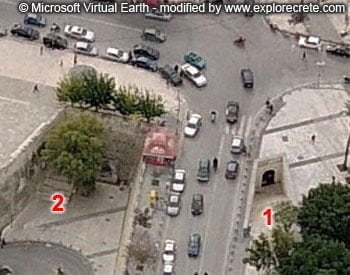
2. Exit to Ikarou Avenue
The gate was also known as the Maroulas Gate, as it replaced an older gate leading from Ikarou Avenue to the Maroulas neighbourhood, where the historic Kapetanakeio School stands today.
The original façade of the St George Gate was a monumental structure adorned with large coats of arms and lions carved in relief. An inscription on the lintel gave the date of construction, 1565, and the name of Captain-General Paolo Zorzi. High above the gate was set a relief medallion with the image of St George on his horse. The imposing façade was demolished in 1917, and the relief of St George is now housed in the Historical Museum of Crete.

Panoramic photo from St George Gate during an art exhibition by the painter Barbara Daling and the poet Dimitris Bounakis
Location of Saint George Gate
The Saint George Gate is on the southeast side of Eleftherias Square. You go down quite a long flight of steps and pass through the large wooden gate to enter a vaulted gallery 43 metres long, leading down to a lower level outside the walls, where there is a municipal car park parallel to Ikarou Avenue.
In the municipal car park (Νο 8) stands the Kastrinakis flour mill, a listed building of the last century in a poor state of preservation.
Ikarou Avenue (Νο 9) leads to Heraklion International Airport via the suburbs of Poros, Katsambas and Nea Alikarnassos.
© explorecrete.com All Rights Reserved. Reproduction or copying without permission is prohibited.

